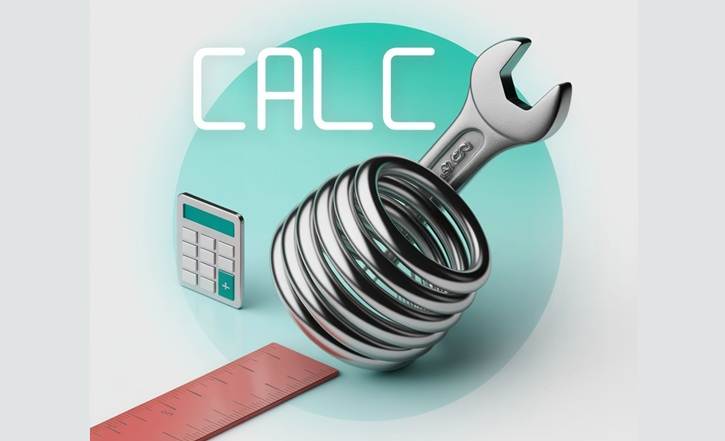Garage Door Spring Size Calculator
Estimate torsion or extension spring specs from practical measurements
Setup
Torsion Spring Measurements
Recommended Spring Specs (Planning Estimate)
Primary Spec
Checks
Notes

Garage Door Spring Size Calculator: Step‑by‑Step Guide
Correctly sizing a garage door spring is essential for safe, smooth operation. This guide shows you how to use the calculator, the measurement methods (torsion vs. extension), the formulas behind the results, and worked examples—plus safety notes and FAQs.
What the calculator estimates
- torsion spring wire size (from 20‑coil method), nearest standard wire size, inside diameter (ID), total coil length, wind direction
- Derived checks: mean diameter, spring index calculation, rough active coil count, optional torque line
- extension spring color code (door weight ÷ number of springs) and optional color‑code comparison
Torsion vs. Extension: What’s the difference?
Torsion springs
- Mounted on a shaft above the door center
- Key measurements: length of 20 coils (to derive wire size), inside diameter (ID), total coil length, wind direction
Cones are often color‑coded: red = right‑wound, black = left‑wound.
Extension springs
- Run parallel to horizontal tracks on both sides
- Key inputs: door weight, spring count, and optional color code
Replace extension springs in pairs and ensure safety cables are installed.
How to use the garage door spring size calculator (step by step)
For torsion springs
- Set Spring type = Torsion and choose your unit system.
- Measure the length of 20 tight coils and enter it (the tool computes wire size = length ÷ 20).
- Measure the spring’s inside diameter (ID) (common residential: 1.75″ or 2.00″).
- Measure total coil length (coil‑to‑coil; push broken pieces together if needed).
- Select the wind direction (right/left). Optionally add door weight and drum diameter for a torque check.
- Click Calculate to see the estimated spec and checks (mean diameter, index, active coils).
For extension springs
- Set Spring type = Extension and choose your unit system.
- Enter the door weight (use a scale with the door disconnected from the opener).
- Select the number of springs (2 is typical). Optionally pick a color code to compare.
- Click Calculate to see the estimated per‑spring rating and how it aligns with the color code.
garage door spring measurement Formulas & sizing logic
Wire size (in) = (Measured length of 20 tight coils in inches) ÷ 20
Nearest standard wire size: tool maps your measured wire to the closest standard size (e.g., 0.2187, 0.2437, 0.250, 0.2625 in).
Mean diameter (Dm): ID + wire
Spring index (C): Dm ÷ wire (typical range ≈ 6–12)
Active coils (approx): (Total coil length ÷ wire) − 2 (rough allowance for cones)
Torque check (informational): τ ≈ Door weight × (Drum diameter ÷ 2) in·lb (single‑spring equivalent)
Per‑spring rating ≈ (Door weight) ÷ (Number of springs)
Optional color‑code comparison: matches estimated per‑spring rating to common color coding (approximate; verify manufacturer).
Worked examples
Example A — Torsion spring (planning estimate)
- 20‑coil length: 4.374″ → wire size ≈ 0.2187″ (standard)
- Inside diameter: 2.00″
- Total coil length: 24.0″
- Wind: Right‑wound
- Door weight (optional): 180 lb; Drum: 4.0″ → torque ≈ 180 × 2 = 360 in·lb
Mean diameter = 2.00 + 0.2187 = 2.2187″; Spring index ≈ 2.2187 / 0.2187 ≈ 10.15 (good); Active coils ≈ 24 / 0.2187 − 2 ≈ 107.7.
Example B — Extension springs (per‑spring rating + color)
- Door weight: 300 lb
- Number of springs: 2 → per‑spring ≈ 150 lb
- Color code: Red (≈ 150 lb per spring, approximate)
Result aligns with common Red coding. Always confirm with your spring supplier’s chart.
Extension spring color code reference (approx.)
| Color | Approx per‑spring rating (lb) |
|---|---|
| Tan | 100 |
| White | 110 |
| Green | 120 |
| Yellow | 130 |
| Blue | 140 |
| Red | 150 |
| Brown | 160 |
| Orange | 170 |
| Gold | 180 |
| Light Blue | 190 |
Color mappings vary by manufacturer and may be specified per pair. Treat these values as planning‑level references.
Pro tips & common mistakes
- Measure 20 tight coils for wire size—don’t use a caliper on painted/rusty wire.
- Confirm wind direction: right‑wound (red cone) vs. left‑wound (black cone).
- Use liquid, level measurements and re‑measure if your value is between standard wire sizes.
- Replace springs in pairs to maintain balance.
- Never remove/set tension without proper bars and training. Call a pro if in doubt.
FAQs
How accurate is the wire size from the 20‑coil method?
Very reliable when measured carefully. The calculator snaps your value to the nearest standard wire size. If your reading is between standards, re‑measure.
What is a “good” spring index?
Spring index (mean diameter ÷ wire) between 6 and 12 is commonly targeted in practice.
Do color codes guarantee the right extension spring?
No—treat color codes as approximate. Verify with your supplier’s chart and confirm against the door weight and spring count.
Can this calculator replace professional sizing?
It’s a planning tool. Always confirm with manufacturer data and consider hiring a qualified technician for installation.
Can this calculator replace professional sizing?
- It’s a planning tool. Always confirm with manufacturer data and consider hiring a qualified technician for installation.
You can explore Similar Calculator like this Suit Size Calculator 2025.

